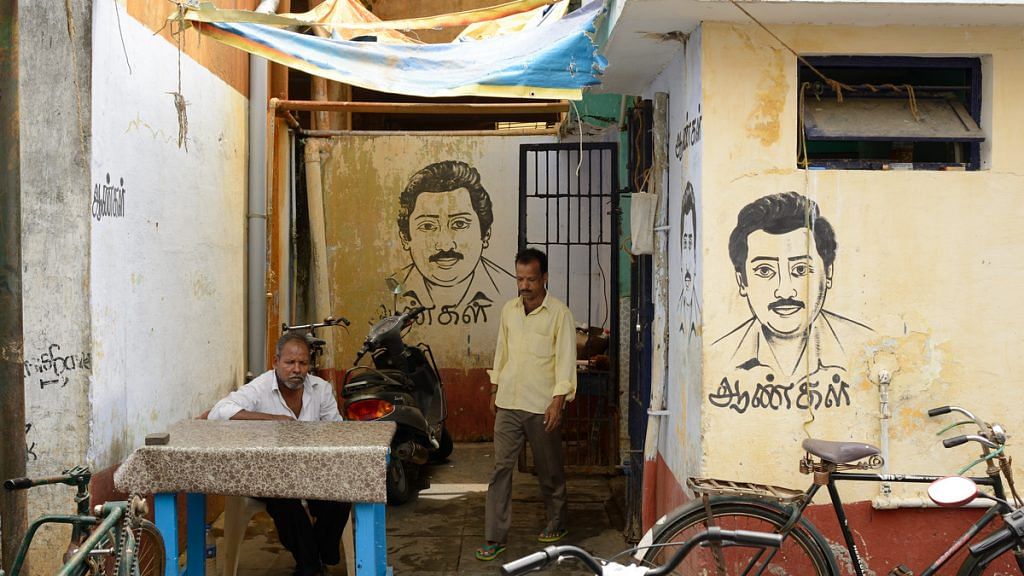Study suggests the high user charges are undermining the benefits of the Modi government’s flagship Swachh Bharat Abhiyan.
New Delhi: They are often dirty and stinking, but community toilets are the only recourse for slum dwellers who often live in tiny shanties with no scope to accommodate toilets and rarely earn enough to fund individual latrines.
But the use of this essential service is 104 times the expenditure made by families with a toilet of their own, says a study that seeks to show the underprivileged may not be getting the financial benefit community toilets ought to entail.
Conducted by researchers Lubna Anantakrishnan and Puneet Srivastava for the international non-profit WaterAid, the “non-experimental” study was based on 10 community toilet blocks in Kanpur and Lucknow, Uttar Pradesh.
According to the study, slum dwellers accessing community toilets in Indian cities had to pay three to six times the United Nations standard for access to affordable sanitation, which is less than 5 per cent a household’s income.
Also read: The ‘c’ in Swachh Bharat is caste and Modi needs to address it
Swachh Bharat
Sanitation has received an unprecedented push in India since the Narendra Modi government launched the Swachh Bharat Abhiyan on 2 October 2014, to curb open defecation, a health threat, among other cleanliness issues.
A recent report in Hindustan Times quoted government officials as saying that 60.07 lakh individual household latrines and 4.55 lakh community toilets had been built in cities as part of the mission.
However, the findings of the WaterAid study suggest the price factor may be undermining the advantage of this endeavour.
Srivastava, manager of policy at WaterAid India, said the focus of the Swachh Bharat Abhiyan had largely been on building household toilets.
“There are a considerable number of people in cities who live in slum-like regions or don’t have any shelter at all,” he said. “If the government actually wants to make a city open defecation-free by 2019, then these people need to be given attention to.”
Srivastava said he appreciated the abhiyan for making sanitation a priority, but added that if household toilets remained the focus, 10-15 per cent of a city’s residents would be left out of the mission.
According to the study, most of the community toilets surveyed imposed an average charge of Rs 5 per person per use, which translates to Rs 750 for a family of five per month for just a single daily trip.
Meanwhile, the researchers pointed out, the sewerage tax for middle and high-income households in three of Lucknow’s most affluent areas (“high land value, and therefore highest tax”) was just Rs 50 per month. The equivalent for a toilet-equipped low-income household in three areas with the highest concentration of slums was Rs 7.2 per month.
This means that families using community toilets were paying at least 104 times the expense incurred by those with an individual toilet.
The researchers suggest that a possible way to address this issue is to cap user charge at Rs 2 per person per use, and tap alternative sources of revenue to make up for operational and maintenance costs.
One solution suggested is the fashioning of the toilet blocks as a larger platform to promote ‘Water, Sanitation & Hygiene’ or WASH services.
“Rs 5 per use is a very high charge for the section of people who regularly use community toilets,” Srivastava said. “But the community toilets may want to continue earning a profit as well. So, they can consider selling soaps, local sanitary napkins, safe drinking water, and make earnings through that vertical.
“Using the toilet is too basic a need to be wanting to make a profit on,” he added.
Also read: Swachh Bharat has made little difference, govt should factor in criticism
Not inclusive either
The study also found that, apart from being expensive, community toilets were rarely inclusive.
According to the researchers, most community toilets didn’t have any facilities for the disabled and the elderly people, with many public latrines used by less than 10 women per day.
Improper management of toilets often translates to broken latches and doors, a major deterrent for women users.
Additionally, none of the caretakers of the toilets was a woman.
